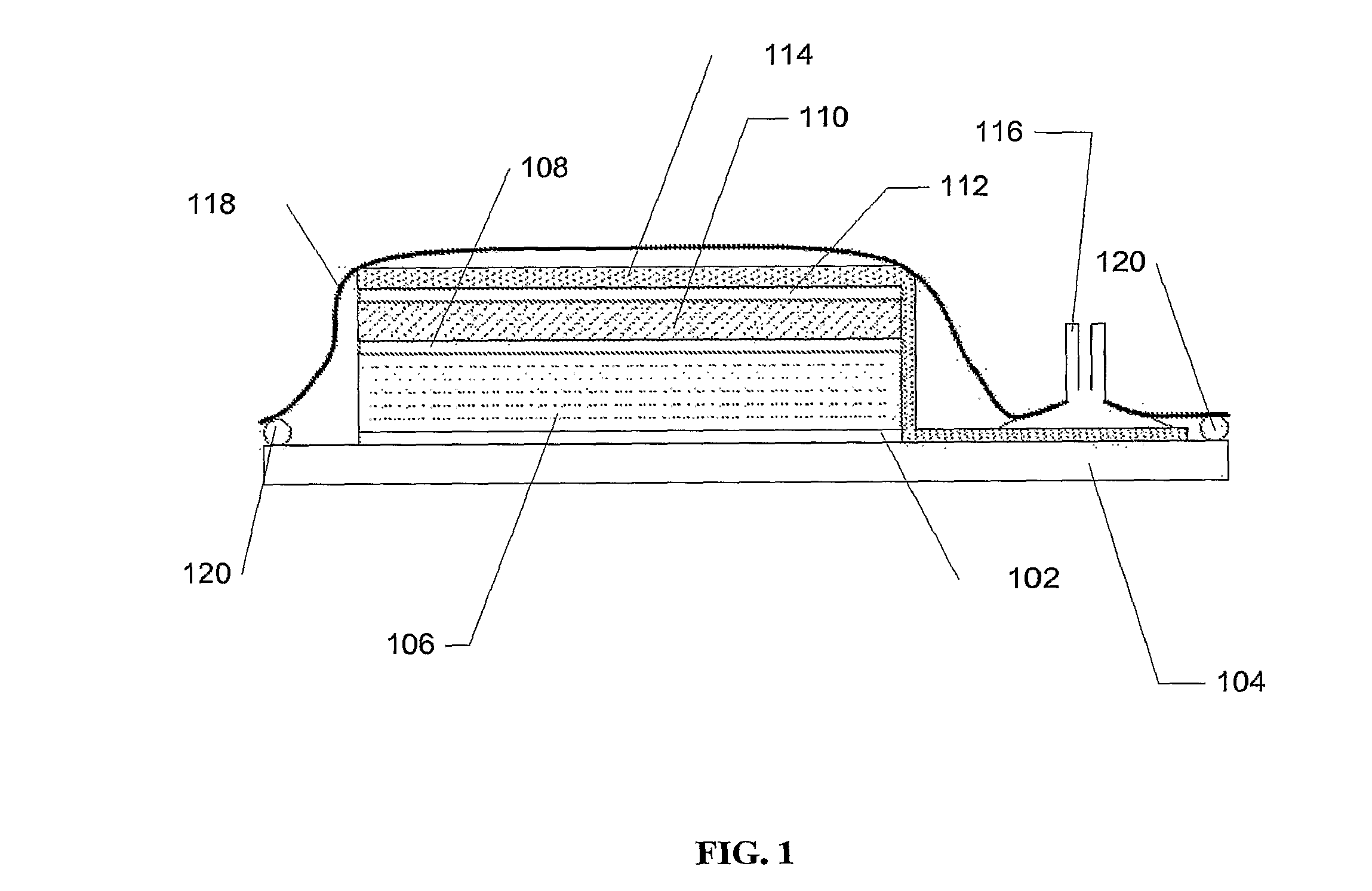Composite Articles Comprising Protective Sheets and Related Methods
a technology of protective sheets and composite articles, applied in the field of composite articles, can solve the problems of composite articles being susceptible to interlayer delamination, compromising the structural integrity of such articles, and compromising the strength or stiffness of the associated material,
- Summary
- Abstract
- Description
- Claims
- Application Information
AI Technical Summary
Benefits of technology
Problems solved by technology
Method used
Image
Examples
example 1
[0113]An extensible polyurethane-based protective sheet was prepared such that the sheet comprised a carrier layer having a thickness of 150 microns, a topcoat layer having a thickness of 18 microns, and an adhesive layer having a thickness of 60 microns. The adhesive layer was adhered to the opposite side of the carrier layer from the topcoat layer. A standard release liner was positioned exterior to the adhesive layer, but was removed prior to testing.
[0114]To prepare the sheet, first a 98# polyethylene-coated kraft paper with silicone coated on one side was used as a release liner onto which the adhesive layer was formed. The adhesive layer was formed from an adhesive composition prepared by charging a closed vessel with initial components as follows: 20% by weight 2-ethyl hexyl acrylate, 5% by weight methyl acrylate, 1% by weight acrylic acid, 37% by weight ethyl acetate, 7% by weight isopropyl alcohol, 26.1% by weight toluene, and 3.75% by weight n-propanol. The weight percenta...
examples 2a-2c
[0122]For each fiber-reinforced composite, a woven carbon fiber fabric containing about 3K tow-weight carbon fiber is used. Such fibers and fabric are available from a variety of commercial suppliers, including A&P Technologies (Cincinnati, Ohio), Fabric Development, Inc. (Quakertown, Pa.), and Textile Products, Inc. (Anaheim, Calif.). For each of Examples 2A-2C, a different uncured epoxy resin composition is used to impregnate the woven carbon fiber fabric. Formulation of the epoxy resin composition for each of Examples 2A-2C is described further below.
[0123]After preparation of the epoxy resin composition and hand impregnation of the woven carbon fiber fabric therewith, four layers of the now impregnated “prepreg” carbon fiber fabric are stacked upon one another.
[0124]As an outer layer, a 150-μm (0.006-inch) thick film of a polycaprolactone-based, aliphatic thermoplastic polyurethane film (available from Argotec, Inc. of Greenfield, Mass.) is positioned on top of the four stacked ...
example 3
[0135]Several layers of carbon fiber prepreg were prepared by hand-coating sufficient epoxy thermoset resin into a 12K woven carbon fiber fabric. The epoxy resin formulation was prepared based on 100 phr of EPON 863 (a Bisphenol-F epoxy resin available from Resolution Performance Products of Houston, Tex.), 22.4 phr of Ancamine 2441 (a modified polyamine curing agent available from Air Products and Chemicals, Inc. of Allentown, Pa.), and 5 phr of CAB-O-SIL TS-720 (a treated fumed silica available from Cabot Corporation of Billerica, Mass.). A protective sheet was directly bonded to the resulting epoxy-carbon fiber composite article using in-mold vacuum bag processing. The protective sheet consisted of a 150-μm (0.006-inch) thick film of a polycaprolactone-based, aliphatic thermoplastic polyurethane film (available from Argotec, Inc. of Greenfield, Mass. under the trade designation ARGOTEC 49510).
[0136]A flat aluminum plate was used as a vacuum bag mold surface. Prior to configuring ...
PUM
| Property | Measurement | Unit |
|---|---|---|
| Volume | aaaaa | aaaaa |
| Fraction | aaaaa | aaaaa |
| Fraction | aaaaa | aaaaa |
Abstract
Description
Claims
Application Information
 Login to View More
Login to View More - R&D
- Intellectual Property
- Life Sciences
- Materials
- Tech Scout
- Unparalleled Data Quality
- Higher Quality Content
- 60% Fewer Hallucinations
Browse by: Latest US Patents, China's latest patents, Technical Efficacy Thesaurus, Application Domain, Technology Topic, Popular Technical Reports.
© 2025 PatSnap. All rights reserved.Legal|Privacy policy|Modern Slavery Act Transparency Statement|Sitemap|About US| Contact US: help@patsnap.com


